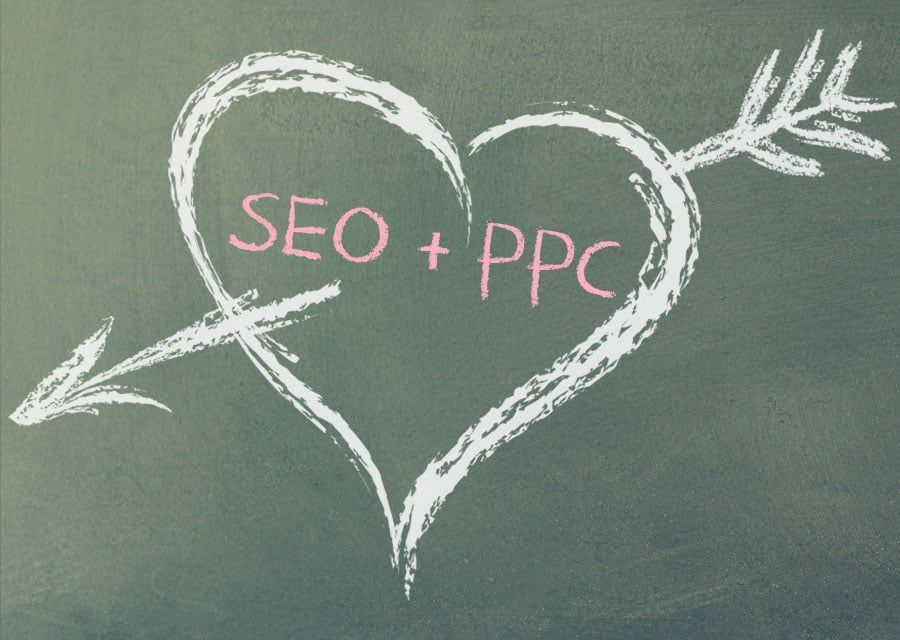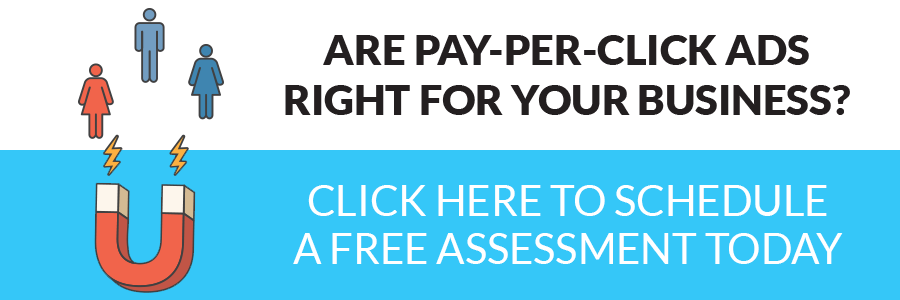Drive Growth Through Google Display Advertising
There are billions of searches performed on Google every day. A tiny percentage of those searches are looking for your stuff (hooray!).
If you’ve done a bang up job with online marketing, searchers will see your organic links and your paid ads. They will click through to your landing pages, discover your awesome products and services, and click your buy button. You spend a little and convert a lot. That’s what we call growth. High fives and floss dancing.
If your marketing has holes in it, searchers will sometimes see your links and ads, sometimes click through to your landing pages, sometimes discover your awesome products and services, and sometimes click your buy button. Unenthusiastic party blowers.
If your marketing stinks, searchers won’t see your links or your ads (because you probably don’t have any ads). GIANT STOP. That’s where things end. You’re not making money and your competition loves the traffic they’re stealing from you—and you don’t even know about all those missed clicks. Lonely disco ball in an empty room.
Does your online marketing stink?
Maybe. Ask yourself:
- Have you fine-tuned your organic marketing? Have you researched target keywords, shaving them down to a few narrowly-focused winners? Have you added those keywords to your landing pages, metas, and titles?
- Have you bought search ads and display ads based on those target keywords?
If your answer is “yeah, mostly,” then you are mostly doing some stuff right.
If the answer is “yes, absolutely!” then read on, savvy inbound marketer! Make sure you are using Google Display advertising the right way (so that it drives growth).
If your answer is “what’s a display ad?” please grab a beverage, get your copy/paste skills ready and open a Google doc. We are about to take things down to thread-level and turn your marketing from the lonely disco ball to Black Eyed Peas at the Superbowl.
The nuts and bolts of organic vs. paid:
The organic part of inbound marketing comes first and works hard in your long marketing game. But the paid part of inbound marketing (the pay-per-click ads you buy) gets noticed first and works immediately. And that is awesome because immediately getting noticed increases your chances of making a sale sooner than later.
Paid ads work like glowing neon arrows that point to your amazing content (your organic efforts). That’s why paid ads are worth their weight—they get your stuff seen.
But what type of paid ad deserves your investment?
The nuts and bolts of pay-per-click (PPC) ads:
There are two types of PPC ad campaigns, and both are critical to a well-rounded marketing campaign:
- paid search ads and
- paid display ads:
Search ads jump the queue on Google Search Engine Results Pages (SERP). They work when someone intentionally looks for your stuff. Search ads cover the customer need end of the spectrum, appearing in the top four spots of Google (above the organic links) when someone searches for the keyword you bought.
You invest in search ads because you deserve your piece of the page-one pie. You invest in search ads because, if you don’t, all of those prime spots will go to your competition. You can’t afford that! Not unless your organic search results are so amazing that they land in spots 5-10 (on page one). And they might! For a day or two. And then again on day 7. And maybe again on day 20. Or not.
Remember, search results change constantly, and organic search results depend on Google’s algorithm. But paid search ads do not. Paid search ads depend only on your pocketbook.
With paid search ads, you pick your keyword and put your money down. Google says “nice doing business with you” and holds up its end of the bargain by serving up your ad right at the top of the page if someone enters the keyword on which you based your ad. Simple.
But search ads only appear on search pages.
What about the wide-open landscape of the internet outside of search pages? The billions of pages out there? Worry not! You can reach that part of the internet too, because...
Display ads appear everywhere.
Everywhere is good real estate. Take advantage of that. Google’s Display Network targets your ideal customers everywhere they go, appearing when they least expect it, touching their eyeballs enough times that, without realizing it, they enter the awareness stage of your sales funnel.
A display campaign works like billboards and TV commercials—supraliminal stimuli that persuade people, after multiple exposures, to consider something.
Display ads are the over-eager students in 90% of the classrooms waving hands high in the air. They’re the banners dragging behind airplanes in the sky. The pamphlets on every counter. The toy in the cereal box.
Boots, bulbs, and bento bowls
Take savvy shopper, Greta.
She was reading an article about IoT device sensors while sipping her coffee. Later, lunch break! She scrolls her heart out looking for a new pair of boots. Beside a slick pair of Frye combats, she notices—only for a second—an ad about lightbulbs controlled by phones.
Next day, while ordering her lunch online, a banner bar appears listing the top 3 reasons why smartphone light fixtures beat out plain ol’ wall switch LEDs any day. She orders a bento bowl.
Later that night, Greta reads about how Jon Snow is actually Aegon Targaryen. What? Get out of Westeros! That means Jon’s the rightful heir to the Iron Throne, not Daenerys (his lover and, as it turns out, his Aunt). How will the Mother of Dragons take this shocking news? And what is that warm-white twisty-looking bulb that’s 40% off beside Daenerys’ gorgeous face?
Greta clicks the ad that jumps to a landing page where the coupon waits for download. She feels like she’s considered that purchase for days already and is prepared to buy.
Display ads engage and re-engage over and over. And over. Does this annoy consumers? Yes, it can. But that annoyance doesn’t hurt click rates. Not if the clickbait is worthwhile.
Google’s Display Network (GDN) is a network of websites that allow space on their web pages for Google Ads — these ads can be text-based or image ads and are displayed alongside content relevant to your target keywords...The benefit to the website owner is that they’re paid per click or impression on the ads. The benefit to advertisers is that they can get their content in front of audiences that are aligned with their personas. These are typically image ads that draw users attention away from the content on the web page.
The point of display ads: to create that coveted click-through to your landing page by whispering over and over to your ideal customers that they want to get to know you. Annoying or not, online display advertising is pretty darned effective at building brand awareness.
Target those ideal customers using ad groups to narrow your reach.
Effective display ads aren’t entirely random.
You can set filters so that your ad gets seen by people who have already visited your site or are likely to be in your market based on things like demographics (age, gender) and psychographics (interests, attitudes, and lifestyles).
You can filter your ad based on context too. Your ad will appear whenever someone searches for a certain thing or goes to a particular page.
These filters keep your ad off of irrelevant websites, which helps to lower the number of impressions your ads get, so that the people you reach are better leads—the people you were targeting. And if you don’t know what type of people you should target, set your target to “automatic” and Google will discover your targeting strategy for you, optimizing over time as it sees which audiences work for you. That’s pretty cool.
What is that clickable “something” passersby can’t refuse?
You get the point of display ads now: to offer an irresistible “something.” Something someone didn’t know they were interested in, but are now very curious about.
But how do you get someone, who might not know who you are, to want to get to know you? How do you encourage that click, increasing the amount of traffic to your website?
With a creative twist.
Put on your quirky thinking cap and make something click-worthy. Maybe your ad is funny or weird. Maybe it offers amazing information in a nutshell that anyone can use to do whatever. Maybe your discount is tremendous. Maybe your ad is mysterious or points out industry myths or relays urgency. Maybe it entices with a valuable giveaway like an ebook or a “get started” checklist or a top 5 “can’t succeed without” roundup related to your whatchamacallit. Maybe it’s a fun quiz linked to your product/service. Or maybe it’s just all over the dang place and super-relevant somehow and now that user wants to know what the deal is. So they click your ad and BAM! Checkmark. In the funnel.
Yeehaw! You did it.
You used a display ad to build awareness about your product/service when a potential customer was poking around. They weren’t at the buying stage yet, but they were at the tire-kicking stage. And your display ad hooked them. It was click-worthy. They jumped to a carefully-crafted ad-centred landing page where they found the thing the ad promised.
But your landing page did something else, too. It made those clickers feel cozy about being there because it was designed so well. It showed them a good user experience (UX). It nudged them a little closer to the bottom of the sales funnel using conversion optimization tactics. Bob’s your uncle.
But, hey… what’s the average conversion rate of a Google display ad, anyway?
0.89%.
“Say wha?” you think with a squished face. “I read all of this to find out that if I use display ads effectively, I can hope to get a conversion rate of less than 1%?”
Yes. That is right.
And here is why that .89% is worth the bother:
- The average cost per display ad click is .58 cents, making display advertising a cheap part of your ad strategy.
- You don’t buy a display ad to make a conversion. That’s why the conversion rate is so low. A display ad is meant to put your product out there over and over and over until familiarity happens. Familiarity is the goal.
Keep this in mind:
- Effective display ads build awareness of your brand.
- Quality content converts.
The only job of display ads is to create a feeling of want for your content (using lead magnets).
Remarketing is an effective way to improve your CRO [conversion rate optimization] and helps you persuade indecisive visitors to go back to your site.
Recap! How to drive growth with Google Display Advertising:
- Know that you are targeting the top of your funnel, capturing the interest of people haphazardly kicking at your tires (and the tires of your competition). These potential customers are not even sure they need you yet. They are not necessarily searching for the thing you sell.
- Know that your goal with display ads is to build brand awareness. Your aim is to get a good Click-Through-Rate (CTR) to your landing page. Your display ad is your first-touch. And your second. And your 7th.
- Create a display ad that ideal customers want to click. Have fun with this! Entice with a valuable (even cheeky) lead magnet.
- Filter your ad so you narrow your reach. You want to make sure that your ad impressions appear only to those who fit the characteristics of your ideal customer (buyer persona). This is important because, according to Hubspot, display ads yield 180 million impressions each month. That’s great, provided your ad impresses the right people.
- Buy more display ads. Want to be even more sneaky and intrigue the want-level of more minds? Put your display ads in even more places. It’s that easy.
Retargeting, a.k.a. remarketing, in Google Ads is a way to advertise to users who have previously interacted with you online but have not yet converted. Tracking cookies will follow users around the web and target these users with your ads. Remarketing is effective since prospects need to see your marketing at least seven times before they become a customer.
The trust you create at the top-of-funnel stage goes a long way toward a conversion later. Display ads plant the seeds of your brand in the minds of passersby. Display ads drop hints from sidebars and banners, in mobile apps, and beside YouTube videos. They pander to customer wants, pull at desires, and pique curiosity.
After multiple one-second glances at your ad, depending on the quality of it, an ideal customer will click on it to see what all the hubbub is about. That click is a success. That was the whole point to your display ad. You try to increase the traffic that clicks through to your landing page. Do that, and the little bit of money you spent on Google Display Advertising was worth all 58 pennies.
Have fun with Google Display Ads! Go for shock value. Go for the laugh. Make eyebrows raise with interest or lower with intrigue. See if you can encourage a click to your landing page and celebrate that click when it happens.
The world of conversion rate optimization takes over from there (but that’s another post)!
Table of contents
Share this
You May Also Like
These Related Stories

What is Retargeting & why should it be a focus of your PPC Campaigns?

Why I Don’t Love Twitter Ads for B2B Lead Generation


